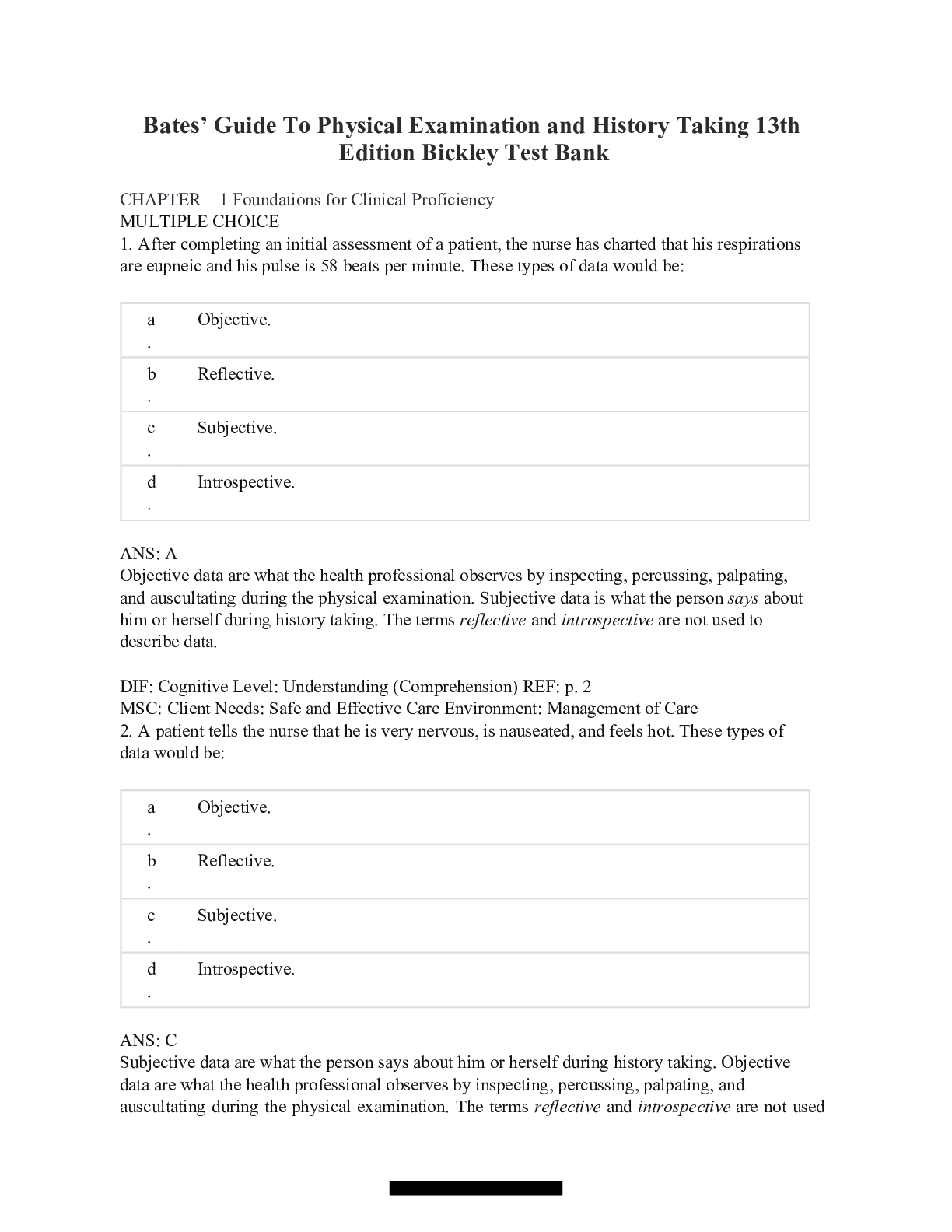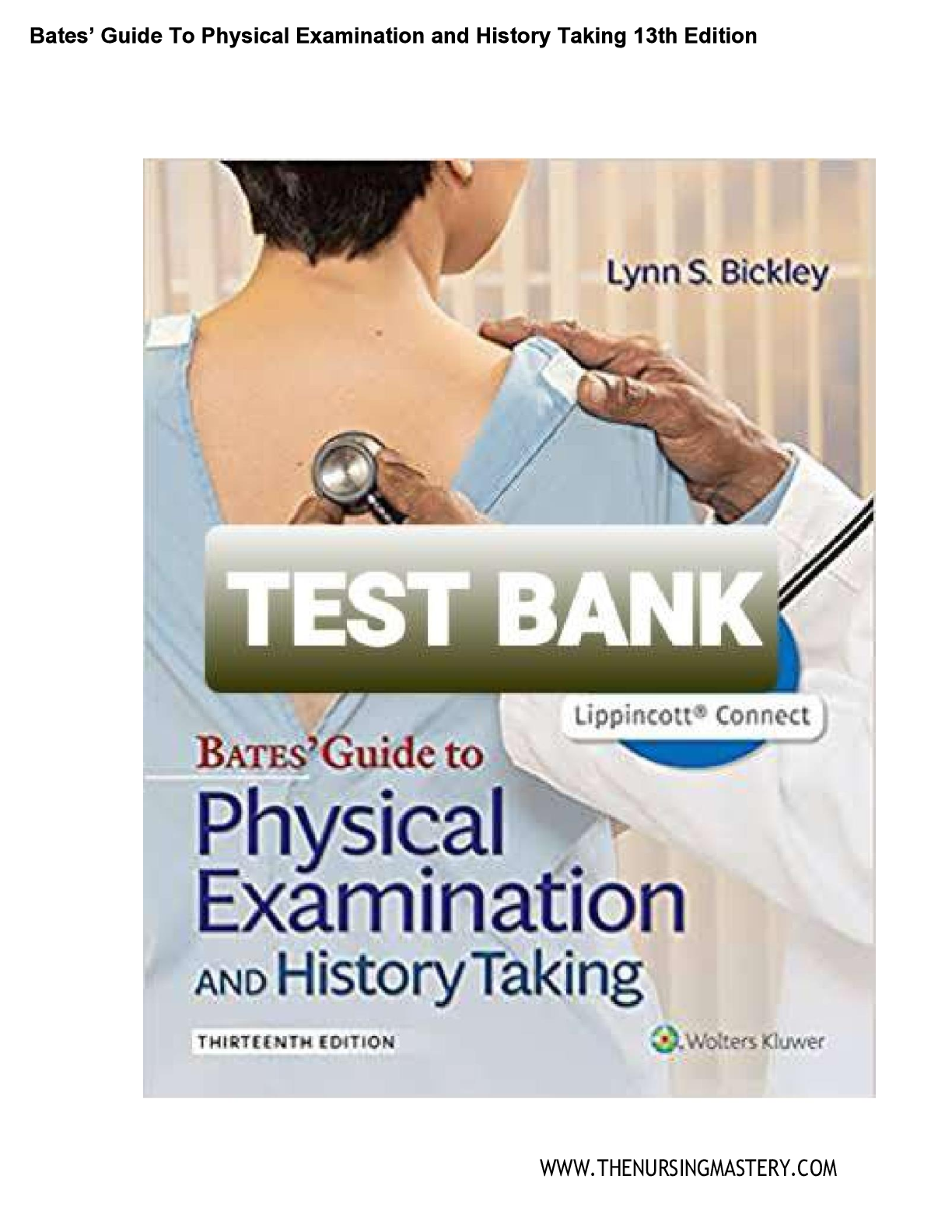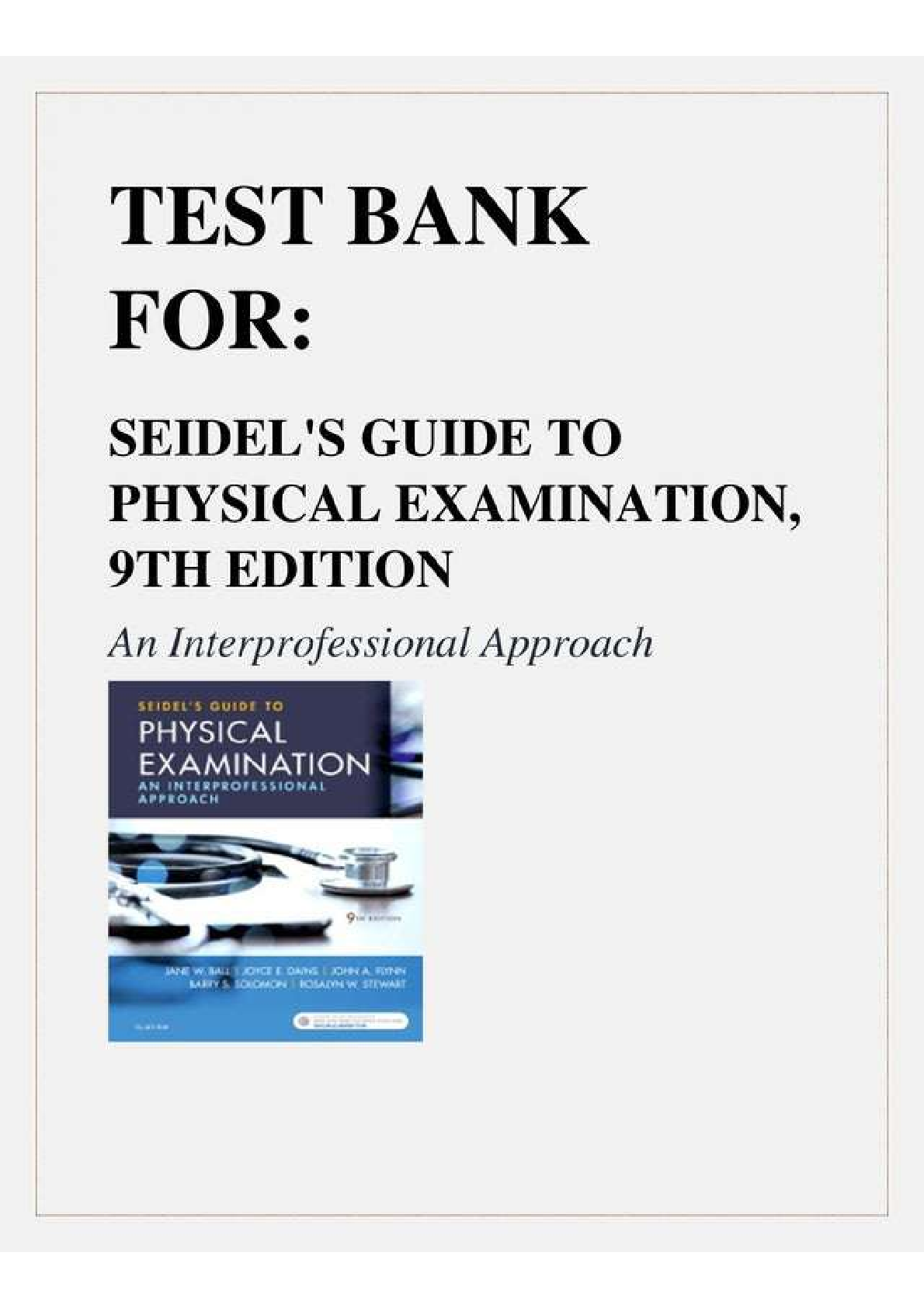*NURSING > TEST BANK > Chapter 20: The Older Adult ; Bates’ Guide to Physical Examination and History Taking, 12th Editio (All)
Chapter 20: The Older Adult ; Bates’ Guide to Physical Examination and History Taking, 12th Edition
Document Content and Description Below
Bates’ Guide to Physical Examination and History Taking, 11th Edition Chapter 20: The Older Adult Multiple Choice 1. Which of the following changes are expected in vision as part of the normal ag... ing process? A) Cataracts B) Glaucoma C) Macular degeneration D) Blurring of near vision Ans: D Chapter: 20 Page and Header: 918, Techniques of Examination Feedback: The lens loses its elasticity over time as part of the normal aging process, and the eye is less able to accommodate and focus on near objects; therefore, the patient will be expected to have blurring of near vision. 2. A 72-year-old retired truck driver comes to the clinic with his wife for evaluation of hearing loss. He has noticed some decreased ability to hear what his wife and grandchildren are saying to him. He admits to lip-reading more. He has a history of noise exposure in his young adult years: He worked as a sound engineer at a local arena and had to attend a lot of concerts. Based on this information, what is the most likely finding regarding his hearing acuity? A) Loss of acuity for middle-range sounds B) Increase of acuity for low-range sounds C) Loss of acuity for high-range sounds D) Increase of acuity for high-range sounds Ans: A Chapter: 20 Page and Header: 896, Anatomy and Physiology Feedback: Human speech is considered to be a middle-range sound. During the aging process there is a loss of acuity, starting with high-pitched sounds but extending to the middle range and then into the low range. 3. A 79-year-old retired banker comes to your office for evaluation of difficulty with urination; he gets up five to six times per night to urinate and has to go at least that often in the daytime. He does not feel as if his bladder empties completely; the strength of the urinary stream is diminished. He denies dysuria or hematuria. This problem has been present for several years but has worsened over the last 8 months. You palpate his prostate. What is your expected physical examination finding, based on this description? A) Normal size, smooth B) Normal size, boggy C) Enlarged size, smooth D) Enlarged size, boggy Ans: C Chapter: 20 Page and Header: 899, Anatomy and Physiology Feedback: This is the expected physical examination finding in benign prostatic hyperplasia (BPH). 4. A 70-year-old retired auto mechanic comes to your office because his neighbor is concerned about his memory. The patient himself admits to misplacing his keys more often and forgets what he is supposed to buy from the grocery store and where he has parked the car. He denies getting lost in familiar places. Upon further questioning, he states that his wife of 40 years died 8 months ago; his three children live in three different states; and he has limited his activities because the people he interacted with were “his wife's friends, not his.” He drinks a six-pack of beer daily; he does not smoke or use illicit drugs. You perform a mini-mental state examination and obtain a total score of 24 out of 28. Based on this information, what is your most likely diagnosis? A) Benign forgetfulness B) Dementia C) Meningitis D) Depression Ans: D Chapter: 20 Page and Header: 911, Health Promotion and Counseling Feedback: The patient has symptoms of depression: His wife died, he has no real social support system, and he has isolated himself from his usual activities. He also drinks a considerable amount of alcohol on a daily basis, which can further depress his mood. Depression can masquerade as dementia in the elderly and must be considered in a patient with memory loss. 5. An 85-year-old retired teacher comes to your office for evaluation of weakness. You obtain a complete history, perform a thorough physical examination, and order laboratory tests. You diagnose her with hyperthyroidism. Based on her age, which of the atypical symptoms of hyperthyroidism is more likely to be seen? A) Fatigue B) Weight loss C) Tachycardia D) Anorexia Ans: D Chapter: 20 Page and Header: 903, The Health History Feedback: This is an atypical symptom of hyperthyroidism that is more likely to be seen in the older patient. 6. A 78-year-old retired seamstress comes to the office for a routine check-up. You obtain an ECG (electrocardiogram) because of her history of hypertension. You diagnose a previous myocardial infarction and ask her if she had any symptoms related to this. Which of the following symptoms would be more common in this patient's age group for an acute myocardial infarction? A) Chest pain B) Syncope C) Pain radiating into the left arm D) Pain radiating into the jaw Ans: B Chapter: 20 Page and Header: 903, The Health History Feedback: This is an atypical symptom and more likely to be seen in this patient's age group. 7. An 88-year-old retired piano teacher comes for evaluation of fatigue. You notice that her clothes are hanging loosely off her frame and that she has lost 15 pounds. She is unaware of this. Her husband of 63 years died a few months ago. [Show More]
Last updated: 10 months ago
Preview 1 out of 13 pages
.png)
Reviews( 0 )
Document information
Connected school, study & course
About the document
Uploaded On
May 06, 2022
Number of pages
13
Written in
Additional information
This document has been written for:
Uploaded
May 06, 2022
Downloads
0
Views
107



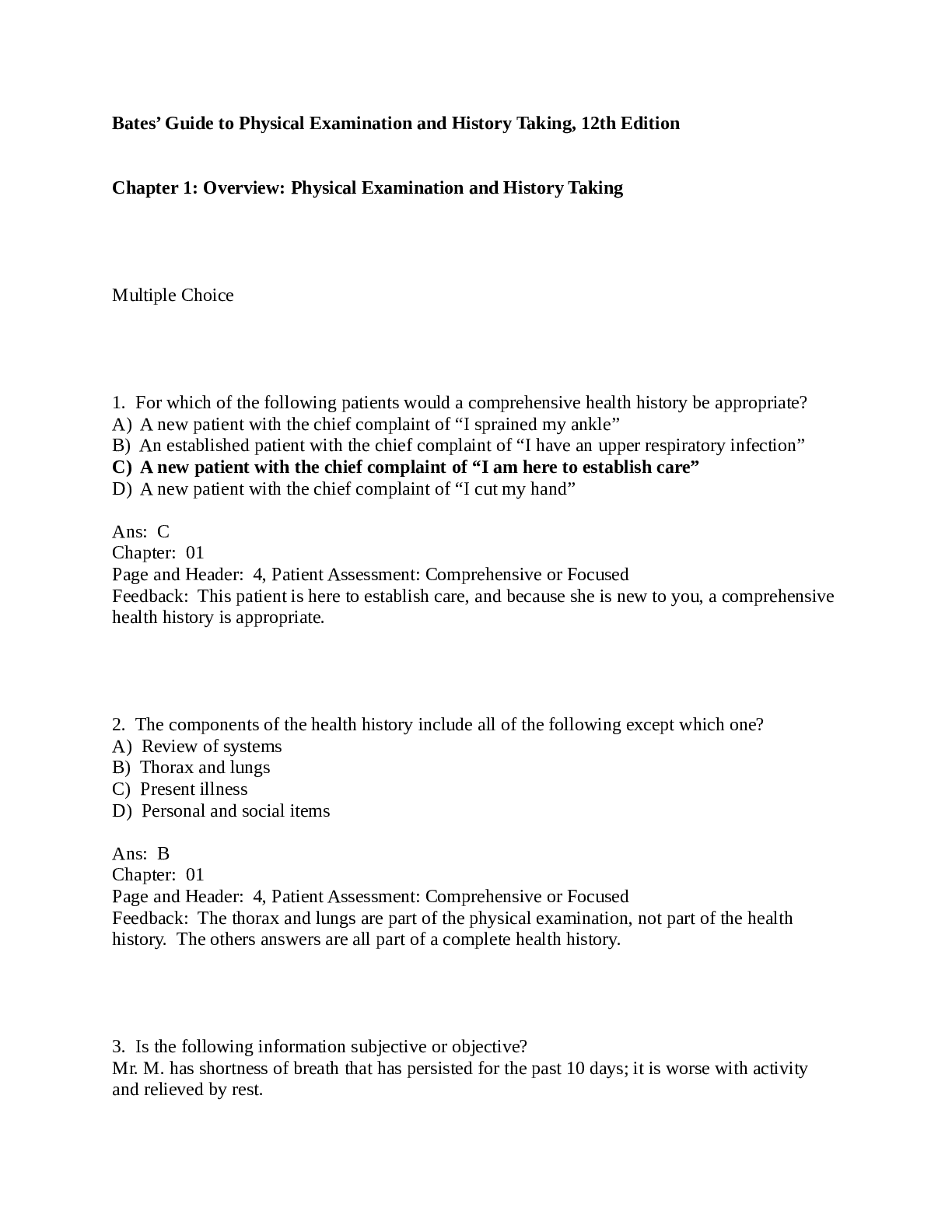
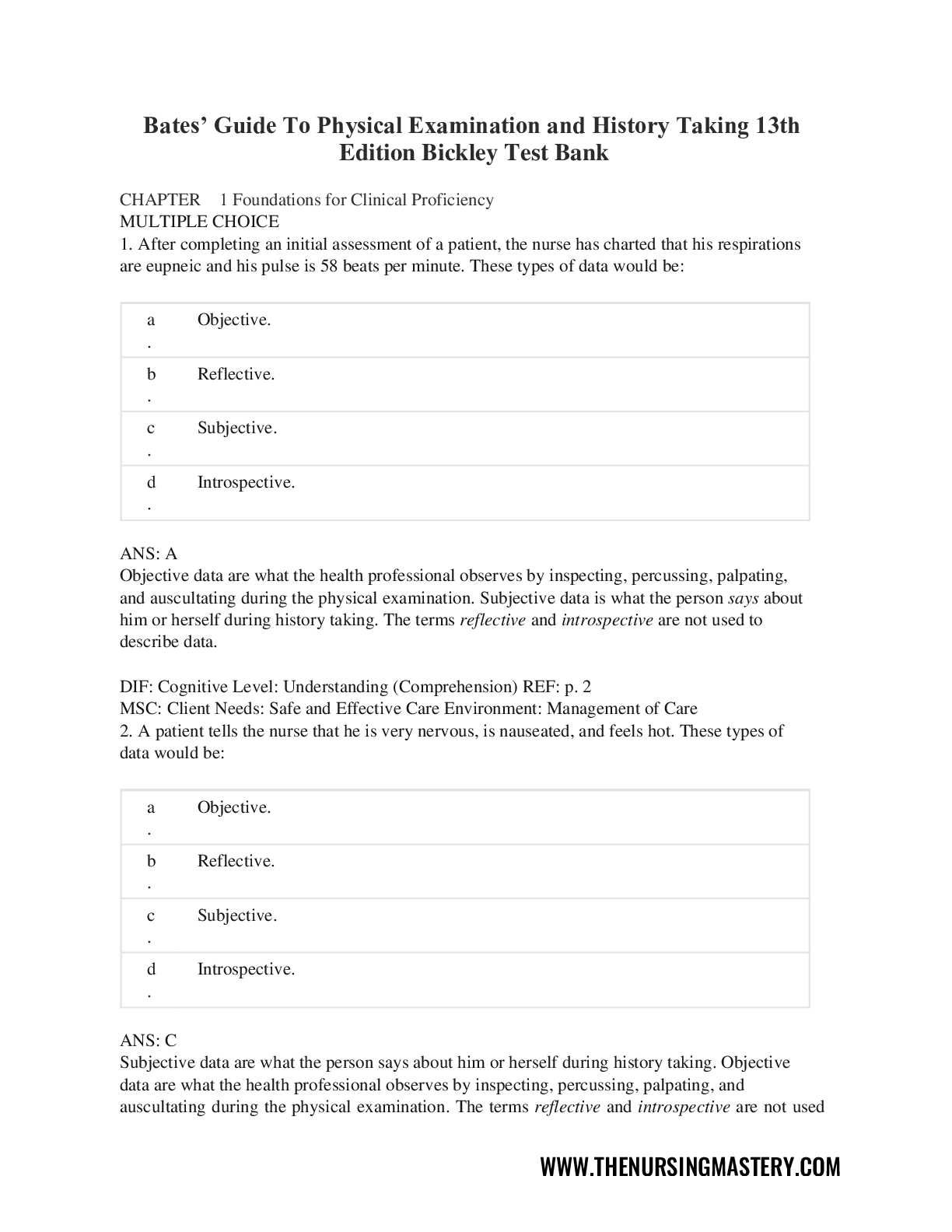
.png)
.png)
.png)

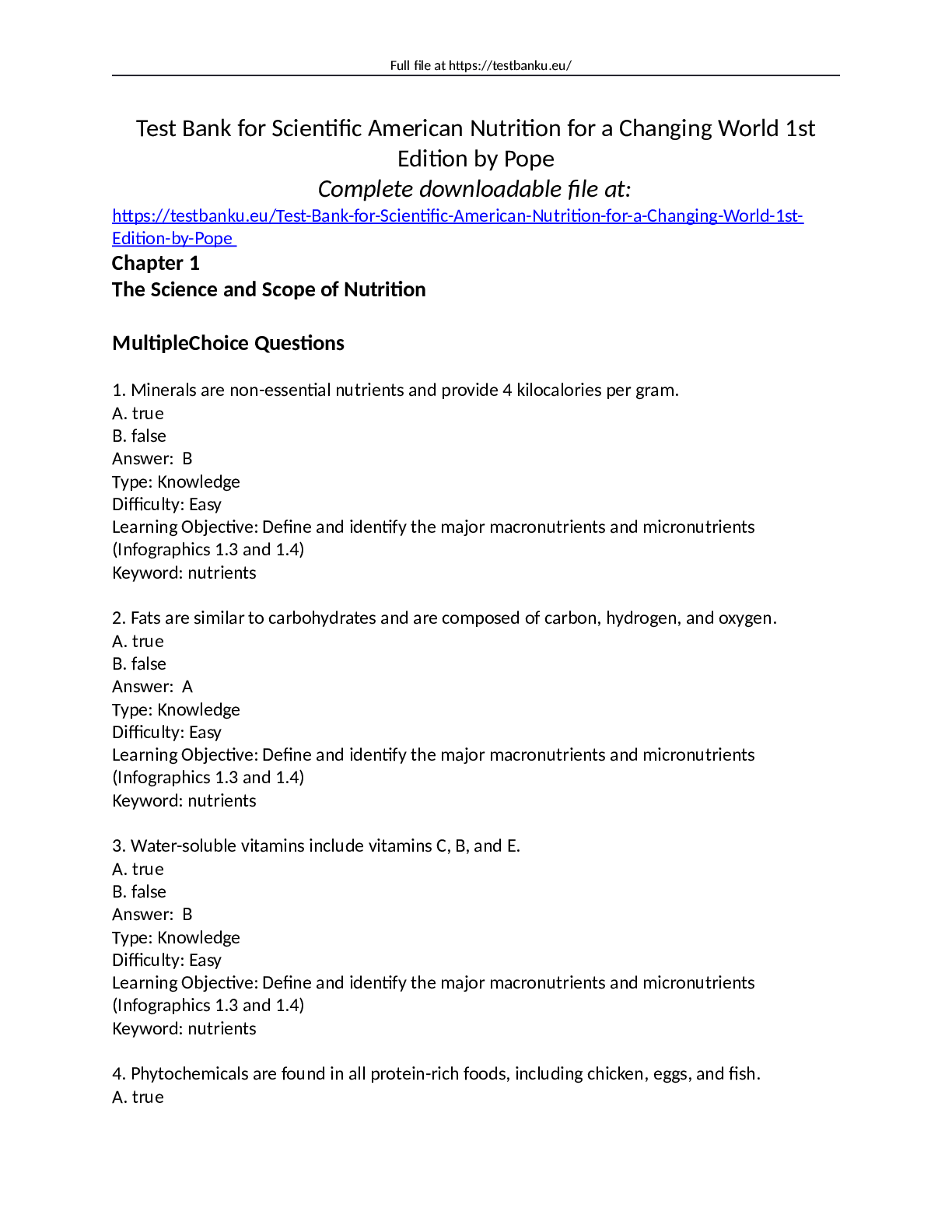
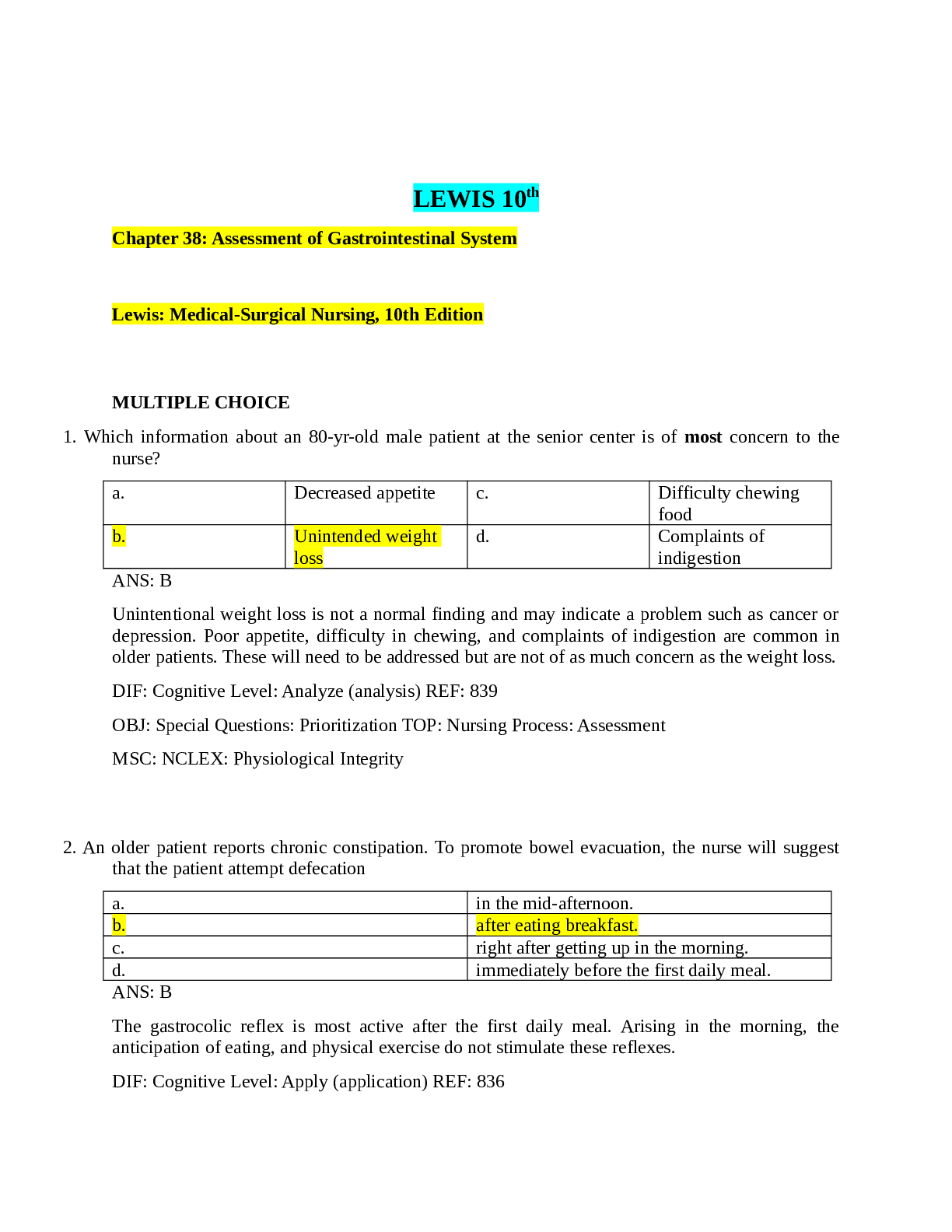

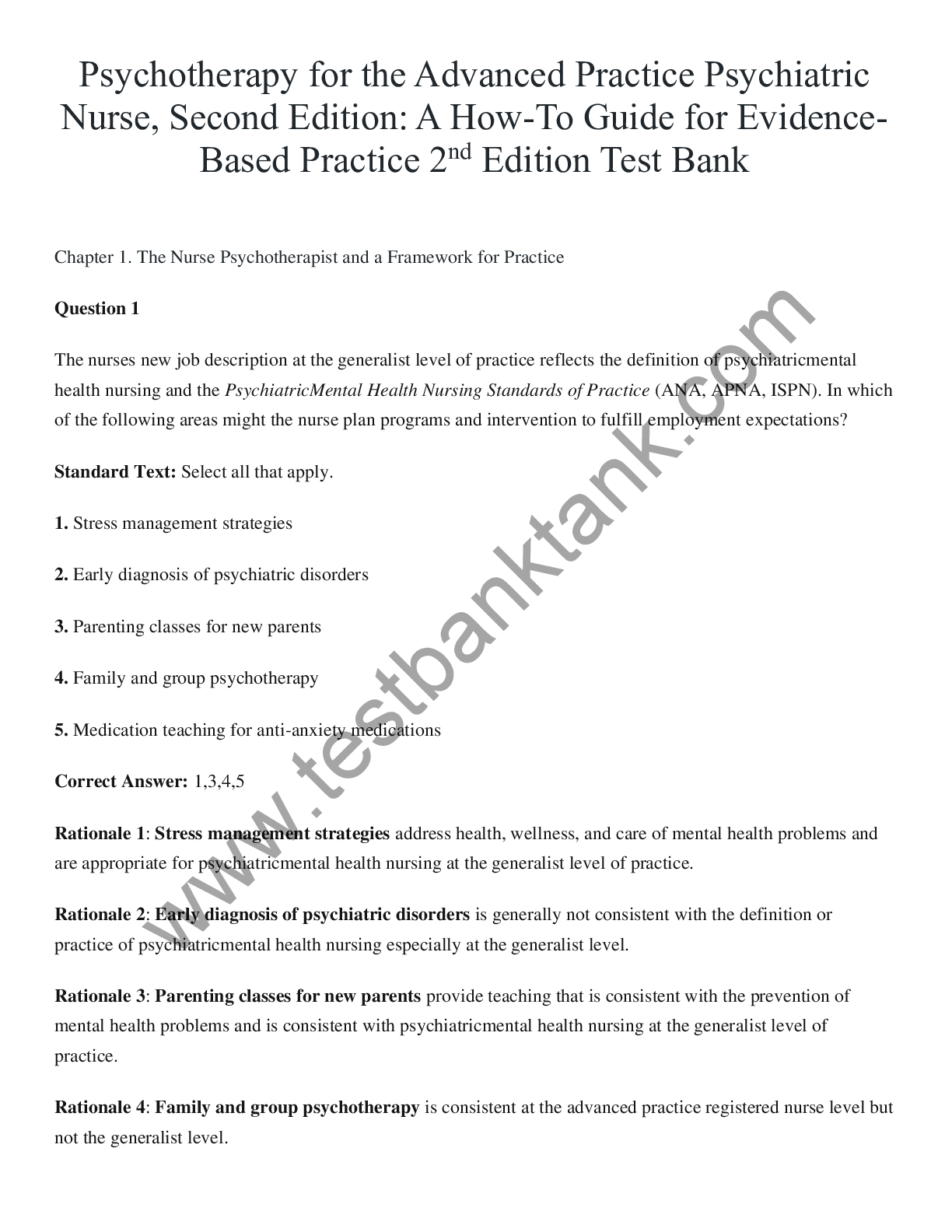
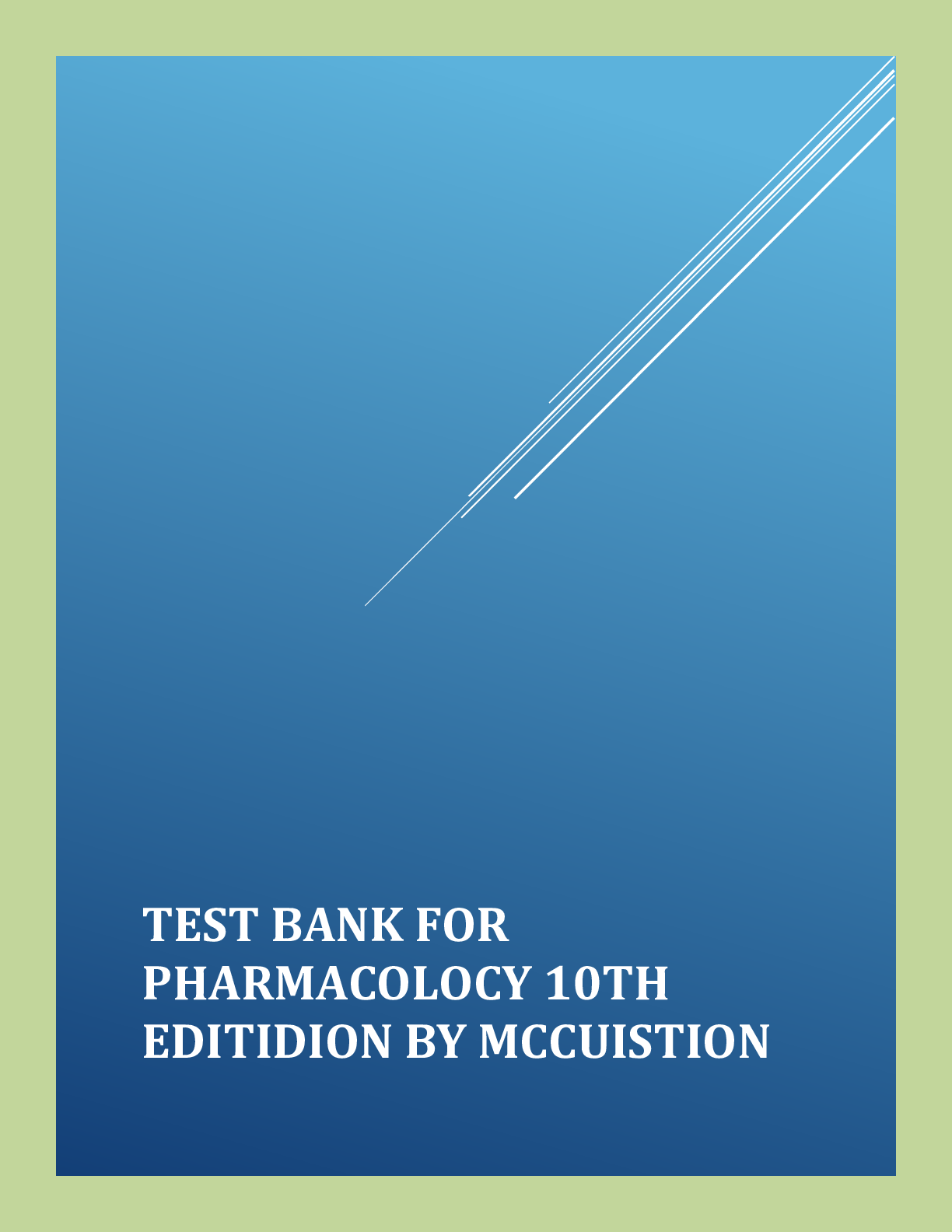
.png)


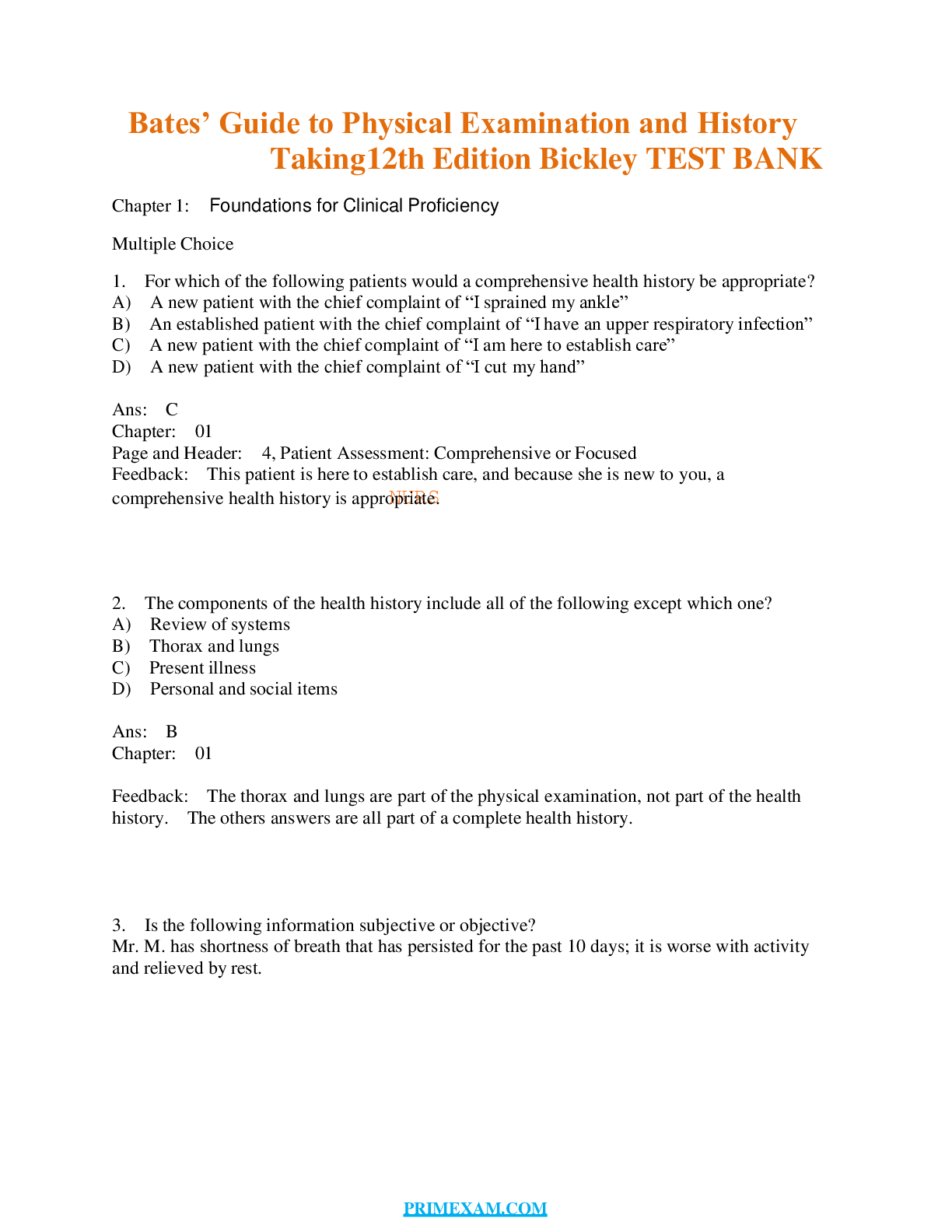
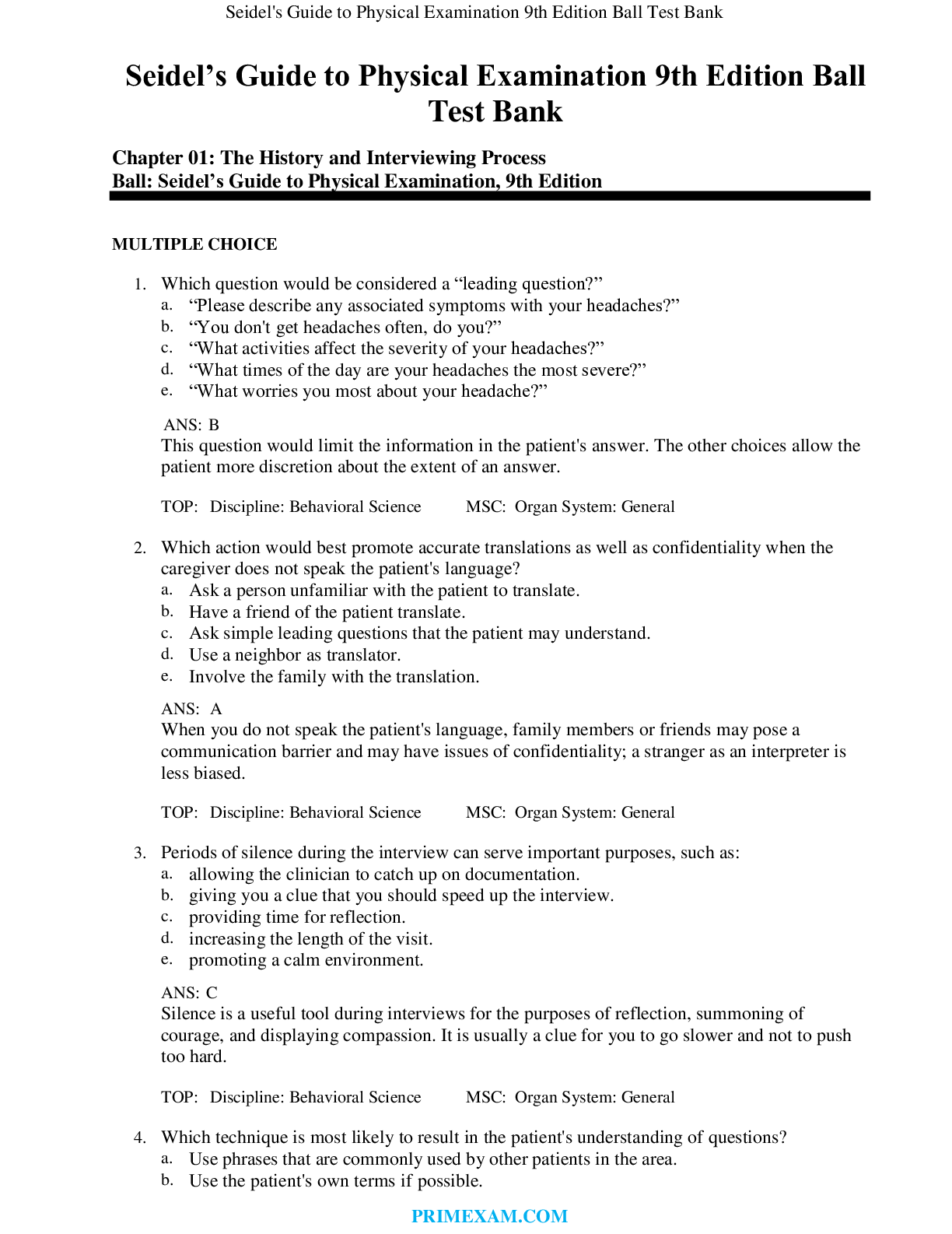

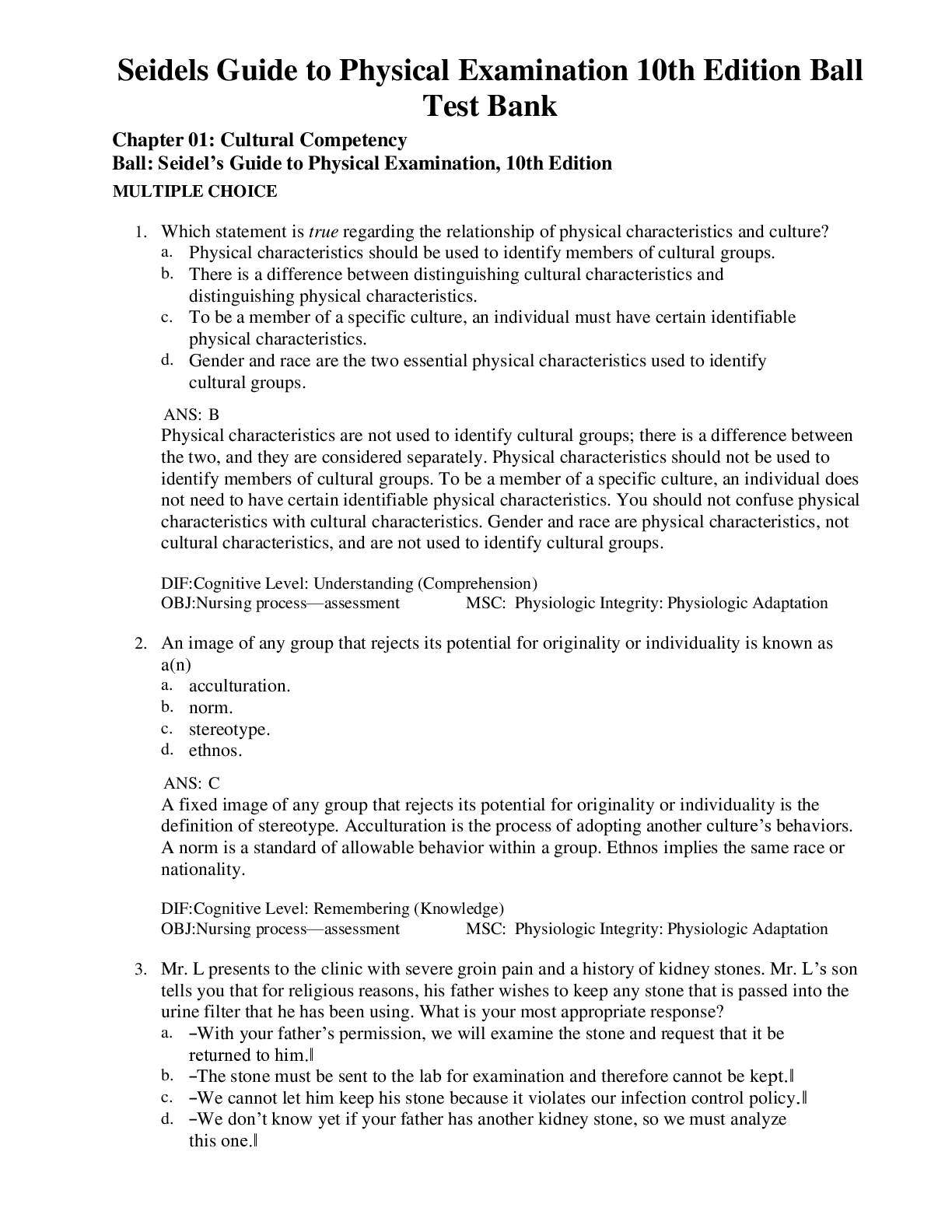
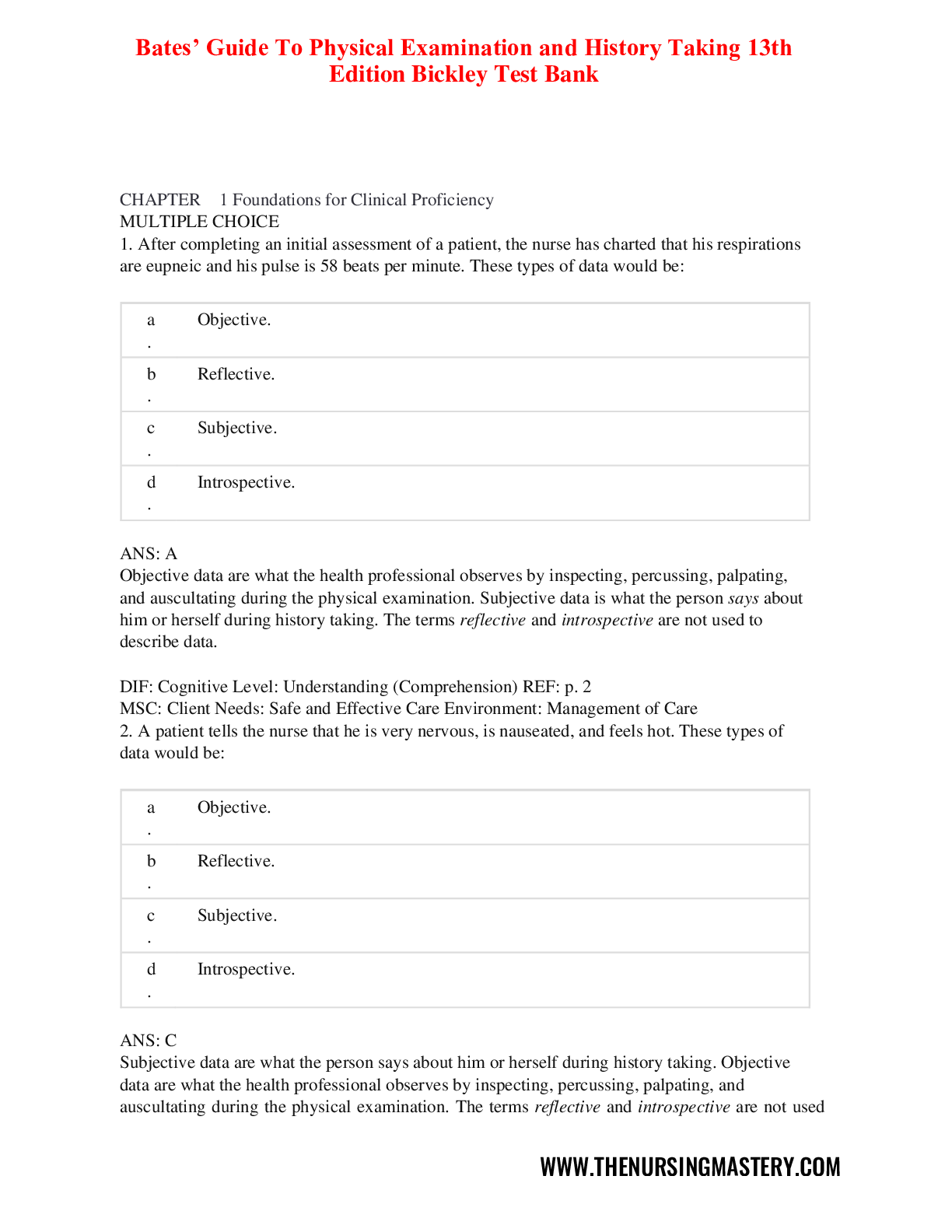

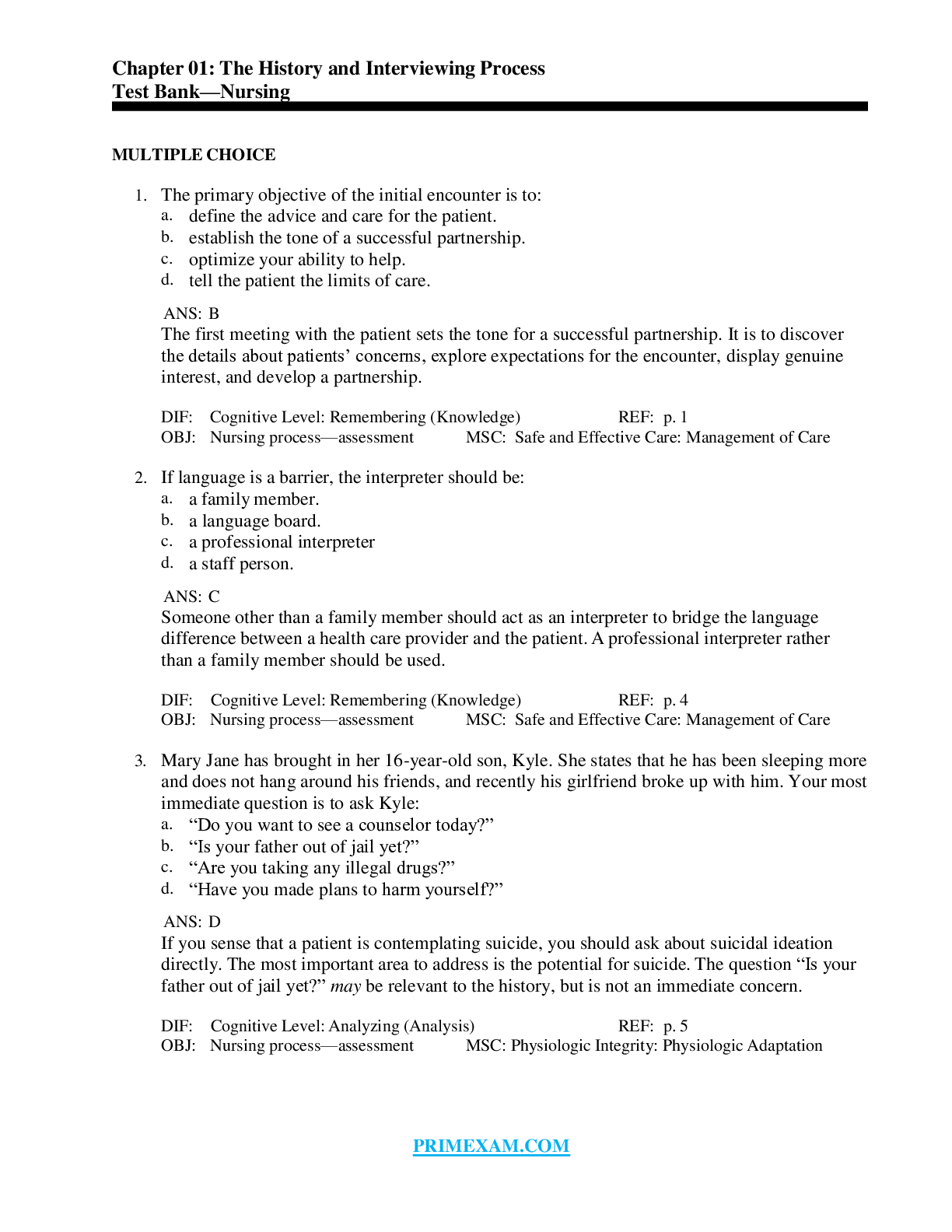
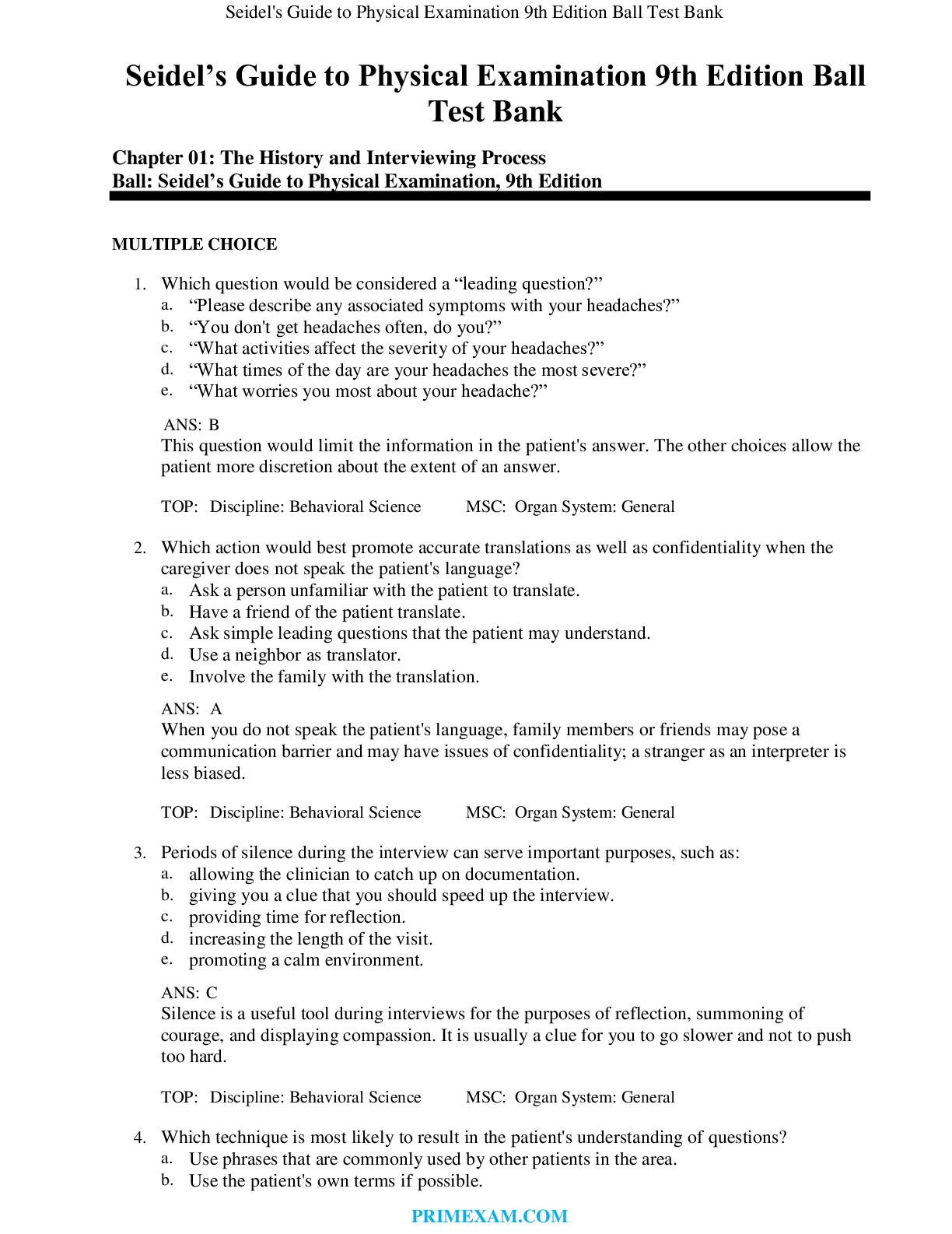
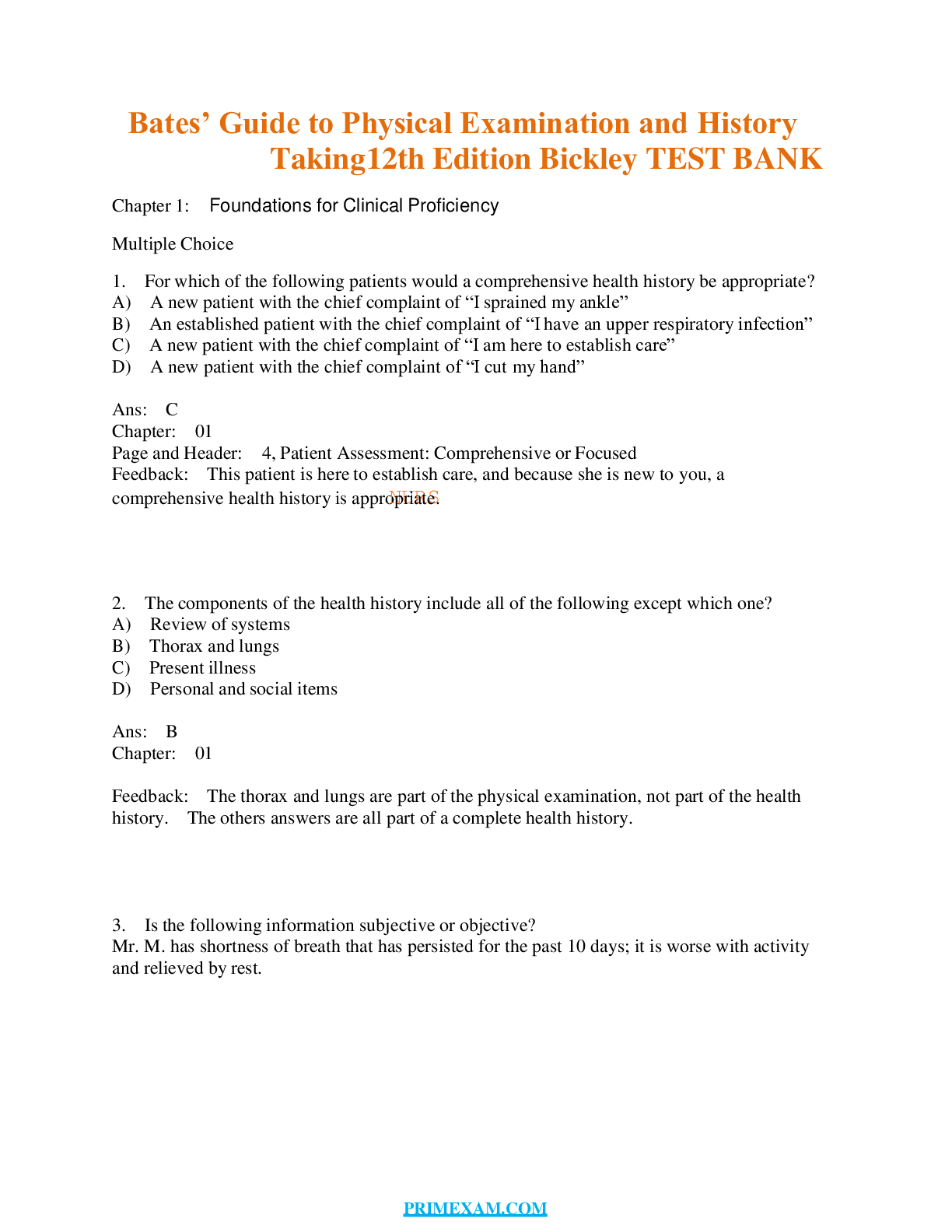



.png)
